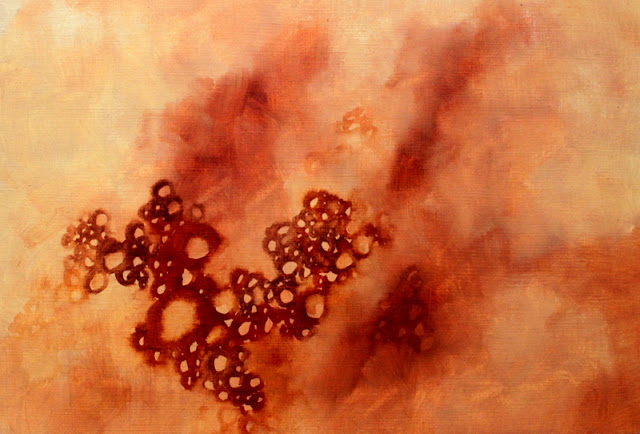This is a complicated project I've embarked upon. It's a form of art, but not only 'my' art; because it seeks to bring a particular ancient aesthetic into a world that usually doesn't look at these kinds of images.
It's unashamedly 'aesthetic', which is unfashionable in the contemporary art world (see the second of
Jim Hamlyn's list of 'threshold concepts' in art teaching). But it's also very conceptual, because aesthetics in Indian art (I need to think about the term 'Indian Art' because it covers so many possibilities), at least in many strands of the ancient traditions, was often a highly conceptual business.
What I'm doing appears to be about 'Indian Gods', with all their associations of image worship, multiplicity, strange forms, and brilliant colour. And yet actually these gods, and this project, are, for me, both philosophically and personally, a way of thinking about what it means to be human.
The multiplicity of gods appear to be separate and non-human with their multiple arms, sometimes multiple faces, occasionally two genders. And yet many strands of the tradition will tell you that this kind of aesthetic form is in fact intended as
a way of helping humans relate to the immanence of a single God, conceived to be permeating every atom of the natural and physical world (and thus humans as well).
The Indian idea of a single God, however, is at odds with European and American cultural assumptions. Leaving aside the mystical traditions, many Christian-based ideas about God implicitly assume a separation between God and man. A God who is watching you, watching over you, perhaps guiding you; or judging you, holding you to account. There's no such separation, however, in, for example, the Indian philosophical idea of Brahman/Atman, which sees the conscious speck that is the human (atman) as an integral part of Brahman, which permeates everything.
I'd better put in a health warning here. Firstly, I'm not currently reading any scholarly works on this subject, but attempting to articulate what sense remains of three years formal study and two field-work-based research projects which were part of my degree, quite some time ago. Secondly, any statement that is ever made about 'Indian thought', or religion, or art, can always be refuted - not just by scholars holding different views, but by the tradition itself, which is a composite of multiple different religious, practical and philosophical strands that were never meant to be united into a single coherent thing.
I'm not trying to represent Indian Art. I'm immersing myself in it; in its forms, in its various traditions; in its ideas and texts. What comes out of this immersion will be a 21st century art form of some kind, rather than an account of something that is either accurate or inaccurate.....
.
























